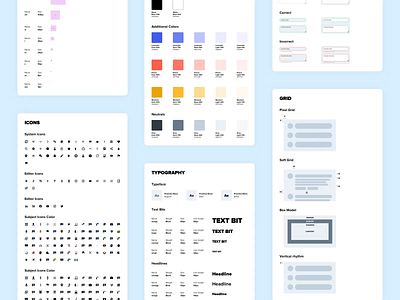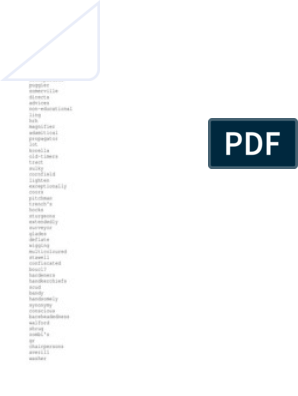what are the materials used in making banig brainly
 What are the materials in making banig? - Brainly.ph
What are the materials in making banig? - Brainly.phBanig This item needs additional appointments for . Please help. Unsolicited material can be challenged and disposed of. Finding sources: – · · · (July 2015) () needs additional quotations for ···· A banana is a hand tissue usually used in and for sleeping and sitting. This type of mattress is traditionally made in the Philippines. BanígTechnically, it is not a . Depending on the region of the Philippines, the mat is made of buri (), or leaves. The leaves are dry, usually dyed, then cut into strips and woven in mattresses, which can be smooth or intricate. The one to make her buri leaves mats. Mats of tikog leaves that are dyed in strong colors to make beautiful and unique designs. The Banig mats are made of sodium grass, a rib-free endemic to the area. ContentTerminology[]Baníg often refers to the brown mat, hand tissue commonly used to sleep. Baníg has been delivered from one generation to another since it is widely practiced in the country, with designs that vary throughout the country. Process[]The art and beauty of the banig fabric are in the complexity of folding over the strips of the material to produce a design of intertwined folds and carries a sequential order of steps to create geometric patterns and rhythm. A hard and very tedious process, knitting banig requires hard work, determination and patience of the manugbanig (a person who knits banig). They cut the bark leaves using sanggot (a arch-shaped cutting tool) and a long slender bamboo pole to reach the leaves of the high-growth cortex plant, the locally known process as the pagsasa. The paghapnig (bundling) and pagriras (stripping off) are the following steps in preparation. The manugbanig gathers and gathers the cut leaves to strip thorns along the edges and in the middle crest. When removing the crest, the blade is divided into two. Each leaf is stacked separately until the package is stripped with thorns. The leaves will be tied firmly in the package so that each piece will not curl while drying. The pagbulada or sun- or dry air follows. The drying of cutlery leaves under direct sunlight gives them a bright brown tone and strengthens the fiber. Dry air leaves are durable compared to sunshine. The leaves with air create stains or black moulds that destroy the natural shine of the brown mats; however, the molds fall easily during the tissue. The pagpalpag or the hammering phase is gradually done by hitting the cutting sheets against a flat stone until they become soft and flexible with the use of a wood club known as sampok. In some cases, the cutlery leaves are softened with an improvised roll trunk made of a tree or coconut trunk that works as a . Paglikid is a process of maintaining the smoothness of the cutting sheets and preventing leaf strips from becoming rigid and sharp. The leaves are rolled one after the other in a round form; laminate tightened the sheet holds its softness and elasticity. The unlocking of the linikid to straighten the spiral cutle leaves is called pagbuntay. Then follow the pagkulhad or crushing of cut leaves in a desired strand through the kurulhadan or sprinkler; a wood crusher. Pagkyupis is the preparatory process for the right fabric. Generally, the cutlery strands are folded in halves. Each kyupis consists of four strands, folded in pairs; horizontally and vertically, with bright brown colour on the outer surface. Taytay is the frame of the entire mat. During this step, the size and length of the mat is already decided. The width will be determined by knitting on the sides forward, making the edge line on both sides of the mat known as sapay. Hurip is the folding of the remaining strands on the sides or edge-line to keep the tissue firmly locked in place. The process also refers to the repair of the worn and damaged mat during the tissue or due to its continued use. Gutab is the final stage in matt tissue. It is done by removing and cutting unwanted strands in the mat, including excesses of strands after the gossip has been done. History[] The people of Basey had been weaving mats long before the Spaniards arrived, they said. Tradition continued with almost everything, if not all, of women who learn the art of weaving at an early age. The weavers are locally known as paraglara. The raw material used in matt tissue in Basey comes from a locally known plant as tikog (), which belongs to the Cuperaceae family and has solid, articulated and generally triangular stems. The cane plant thrives well in densely wooded areas and grows even in the rice fields. Tikog fully grown up to three meters. Its width ranges from the finest from 1.5 to 6 millimeters (0.059 to 0.236 in). Basey weavers use the finest tikog. Tikog stems are cut first to the desired length and then dry under the sun. Some of these stems are stained with the desired color and dry again. Then these are flattened just before they are weaved in the mats. A tradition lives in[]Mat weaving is an ancient industry of the basey country house, many of its villages dedicated to crafts. In Barangay Bacubac, about three kilometers (1.9 miles) northwest of the city, older women spend the day knitting banig inside their nipa cottages, while their husbands prepare the tikog materials they will use. In Barangay Basiao, the last town of Basey to the southeast, which is about 20 kilometers (12 mi) from the city itself said, some of the women spend the day knitting mattresses under a stone formation similar to the canopy. The place is actually a part of a small cave located along the national road, just across the coastal village. Women explain that they prefer to work in this place because the cool environment makes the tikog less fragile, so it is easier for them to knit sleeping mattresses. In other places in Basey, many women are busy knitting carpets that would later sell in the city to increase the income of their spouses. Others sell their mats to entrepreneurs who would bring the product to sell in the city of Tacloban, which is about 30 kilometers (19 me) away. The usual designs of the Banig de Basey are (), sinamay (controlled) and embroidery or pinahutan (). The sizes also vary. Regional/ethnic styles[] In the warm and humid tropics, several cultures have devised ways and means to make life more tolerable, if not comfortable. The Philippines is not an exemption, and nowhere is this solution as obvious as in the use of the variety of materials to make mats. Various species of cane grow profusely in swamped areas, as well as a series of palm species, and rattan. These materials remain fresh in the heat of the day, are soft to touch, and porous enough to let the ventilation pass. Throughout the country there is a variety of carpet manufacturing traditions using indigenously cultivated materials and embellishing these creations with highly imaginative designs. The range of materials and designs evident in the many sterling manufacturing traditions in the Philippines indicate the many adaptable approaches that each culture has made in relation to its environment. Each group has used materials that grow locally and are readily available. Bukidnon[]The Bukidnon-Tagoloanen tribe has been weaving the banig mat for immemorial time, using the sodsod grass rods. Not all the women of the tribe are taught to knit the banig. Only daughters with the sharpest mind and persistent attitude are taught to weave ("the"). Banig-woven designs are inspired by nature. Fabric designs to date have generally been learned from mothers and grandmothers. The Bukidnon-Tagoloanen Banig Mats are notable for their intricate designs that form directly as the grass rods are weaved together (and are not inserted into a finished white mat). Bukidnon weavers (or "maglala") make circular and rectangular mats of banig. "The Tagoloanen generally prefers three forms of design or guwat...Tinulisan are diamonds, squares and rectal rectangles arranged in rows and straight columns; binakusan, arranged diagonally; and bukanayo... or the repetition of small details of refined design that fix them in a form of crunchy grid." The tradition of Bukidnon-Tagoloanen fabric almost died, until it was revived in 2012 by the Women's Association of Tagolwanen (TWWA), formed to preserve and promote the fabric, as well as the traditions and customs that surround it. Cordillera[] The pine cane grows abundantly on the steep slope of the mountains of the center of Luzon. It is used in many ways as ceiling materials, tear material and basket. It is also used when lying as a mattress to forge the ground in the traditional or house. Roin is a pencil-sized reed and most people would not feel comfortable sleeping because of its irregularity. A softer material of bark strips would be prepared that are collated in layers. But making the crust of crust strips takes a long time. Sometimes it is used as a mat and can sometimes be used as a blanket to protect the oneself from the cold of the high earth. Freedom[] In the northernmost part of the city is 146 kilometres (91 mi) from the capital. It is a city both on the mountain and on the coast, surrounded by the cutting plant (, Pandaceae family) which is a versatile material in matt tissue. The city has been a pioneer in the Banig fabric, which has become one of the main sources of livelihood of the folks. The banig produced in this city is being sought in local and foreign markets due to its unique and intricate tissue. Mëranaw[]The one and the one to share a common tradition of carpeting. These two groups, which adhere geographically and speak a mutually intelligible language, nourish a sophisticated tradition of weaving not only in mats but also in textiles, baskets and other fabric containers. Mainly known for its colourful, women also knit for domestic use. Most of them are usually used to sleep but more smooth are also weaved and used to dry shovels and other grains. Some extra large are donated for use for floor line . The material for the mat comes from seed (Fimbristykis miliacea L.), a precipitation plant that grows in pantaneous areas both in Lanao and Cotabato. The bask area on the eastern side of , which is well watered and where the seed grows in abundance has led to the commercial marketing of this raw material. Very adjusted in the packages, the seed could be purchased in market stalls. There is also a similar phenomenon in Cotabato. The flood plains of the same also feed an abundance of seed. The seed is harvested and cut in lengths of about 30 inches long (76 cm). Dry under the sun for a day to remove part of the water content, but retaining its flexibility. Overdying will make the seed break into the weaving process. They are boiled in chemical colorants of green, brown, yellow and blue. The natural color of the seed is also used for contrast. The most unusual feature of the mats in this area is the round shape of the tissues by the Maranao. It is unclear whether the mat is round, which is the only mat produced in such a way throughout the country, is a recent or traditional development. The form may have been determined by other elements in material culture such as tabak or round brass support that serves as the low table used to eat or serve guests to group people in the round. The round mat often presents spiral forms coming from the center. It also comes in a series of color concentric shapes with each band of later color larger than the previous internal band. The square mats, on the other hand, usually have irregular geometric shape arrangements established in different colors. There is hardly any correspondence in the motive found in the cloth, compared to those of the mats. The emergence of the woven carpets in the Middle East that coincide with the intensification of the Islamization process in the south of the Philippines, characterized by mass groups of pilgrims to , had slowly relieved the mats, especially the mosque, and there is a greater use of carpets. However, it is only that this relaxation of the use of the traditional carpet has been observed. Palawan[] The lush and extensive tropical rainforests, which shelter the wild and profusion, make it the perfect choice for raw materials for the Palawan mat. The group, which still writes in a pre-Hispanic paleographic script, aligns with waitress and gathers the rattan strips to form their mats. The ends are carefully bordered by knitting it closely with smaller rattan strips. The technology to make the Palawan step makes it the most durable of all the mats made in the country. A similar tradition is among the Tawi-Tawi people, as well as the Samal, with this last group using a mat as a wall decoration instead of sleeping. Romblon[]The island has a unique tradition of making math remarkable for its delicate lace edges. These mats are traditionally used as the liner for the wedding dance performed by the newlyweds. During the dance, the respective relatives of the couple live among themselves that they can throw more coins to the couple or paint paper money in their clothes. The dance stops as soon as the money release is over. -like mats are not normally used. Apart from the wedding dance, it is only used when one has very important guests. In , , the same buri material is used for the manufacture of carpets; a double layer mat with one side using a design - or - similar to color while the reverse remains clear. In , another kind of palm that has thicker leaves is used for the manufacture of carpets. The karagamoy call. It comes in two shades: the color of natural straw and a deep brown shadow reached by packing the material for several days in the water of the sea, which makes it waterproof to insect attacks. Samar[] The mat could indisputably claim to be the most used in the country. One could find the Samar mat in the markets both in and in, not to mention the many islands of Visayas. This popularity basically comes from its attractive colors, as well as its highly affordable prices. The center of preparation of mats in the province of Samar is the city of , just in front of . The raw material is the tikog, an herb that grows profusely in pantanous places. The process is very similar to Maranao and the limited use of color make these two traditions look like each other in shades of color. But their designs differ markedly. The Basey manufacturer uses a border design and a central motif that is often a stylized delivery of flowers, such as sampaguita, gumamela, rose or orchids. Most of the time, the motif is made in a contrasting color or natural tikog color. The most complicated come in multicolored tones and cost more. From time to time, a mat would appear showing the excellent likeness of an important, recognizable, local or foreign public figure. A particular practitioner in the area makes this "peat of pleasure" as a highly specialized artistic skill that is difficult to transmit to the younger generation. The technique to create the design in the Basey mat could be called as the design is inserted after the basic floor mat has been completely woven. The design therefore is superficial to the basic mat, only a contrasting overlap. While the design in the Basey estuary is generally conventional and meets with a design repeatedly, a particular home in Basey has ventured into new design concepts inspired by suggestions made by strangers. Although imitative and derivative in nature, it is a sign of a growing awareness of a more open approach to design, but still using the same technique they have traditionally done. The only other notable tradition in the Visayan area is the bamban mat of . Made of the bambam reed, this less flexible carpet compensates with a slightly bright natural finish. It is always made in its natural colour, the bamban mat is still widely used throughout the rural Iloilo. Sulu and Tawi-Tawi[] Among the three ethnic groups in , the occupation of a socially preeminent position, followed by the place between, and finally the lowest. The Tausūg are traditionally known for knitting intricate silk in the loom, with the Badjao and Samal most inclined to knit mattresses instead. The Badjao are traditionally residents of a boat, and are often mistakenly classified as Muslims despite the adherence to a somewhat synchrotic belief system that significantly links them to the sea. The Samal, on the other hand, which occupies the largest island of Tawi-Tawi, is Muslim and is generally engaged in trade and agriculture. The last two groups speak mutually intelligible languages and conduct a symbiotic commercial association, and are more concentrated in the province of the archipelago. Badjao and Samal[]The and the carpet, of design, is undoubtedly the most interesting tradition of the whole country. The most used material is the pandanese plant that grows abundantly on the island of Tawi-Tawi with limestone base. Wild and unhindered growth on the shores and sandy beaches. The techniques to prepare the pandan and knit the mats are generally similar throughout Sulu. In 1962, an American volunteer named David Szanton (since then an anthropologist and currently head of the International Programs in the ) conducted a survey of the area and described the process of producing mats: "First, the thick pandan leaves are cut and the central rib is removed. The two halves are separated and then rolled into a coil, about one foot in diameter. Lying and kept in the bottom of a pot by a rock, the coil is cooked by boiling water, eliminating part of the color. The coil dries in the sun, opens and leaves flatten with stick. They are drawn through a small metal tool, which cuts each sheet into four or five narrow strips. The edge strips are discarded and others are loosely hooked and they are left to bleed further in the sun before they are soaked in cold water for about 12 hours. By that time they have been driven by the sun and softened with the stick once again, the natural color has almost completely faded and can begin to die. " The dyes used are chemicals, producing green, orange, red, violet, blue, yellow. After dyeing they are placed in the shade to dry and again smoothly beaten to soften the material. This preparation usually takes about a week, while the tissue may take two to five weeks. The mats woven by these two groups could be distinguished by their design and use of colors. The small mats have four general patterns: stripes, multicolored squares, check white and other colors, and a zig-zag pattern. Samal's mats are mutilated in colors and are softer to the touch, which is achieved through repeated blows during the preparatory phase. The slightly bright effect on the surface is achieved by diluting the dye with some. These later techniques in preparation are not made by the Badjao, making their mats less flexible than that of the Samal and a bit rigid when new tissue. Among the exuberance of the color Badjao used, as well as geometric and highly spontaneous stylized symbols, located apart from the sterlings of Samal. The recurring motifs that arise in the Badjao mat are in the form of styling crab design, a series of wave or boat forms, patterns created by the moved water, and some other forms of marine life. Audacity derives from the use of colors that contrast with the background. After finishing the mat weave, another mat without dye is weaved and used to align the back of the main mat. The coating usually extends about two or three inches beyond the frontier of the main mat that is safely attached to the backrest. This gives you a framed look, and ensures durability for the mat. There are a couple of islands in the Tawi-Tawi that are known for their carpet manufacturing, Laminusa Island produces commercial carpets that are sold on the archipelago. Flexibility and fineness in the fabric is what distinguishes the mats of Laminusa. These outstanding skills have been recognized at the national level when one of the Laminusa weavers won the Manlikha ng Bayan Award in 1990. The other island known for its mat is Unggus Matata in the island group. But the weavers on this island only make carpets for themselves and do not sell them commercially. Visitors who had seen samples of Unggus Matata rugs swear they're superior to Laminusa's. Samples produced by the migrant Badjao, which had been installed and , can be seen in the museum in . Recent reports of extensive amounts of unusual surfacing design mats in the markets in , come from resident Badjao who had taken permanent residence in Sabah. Some 10,000 Badjao who eluded the Marauding pirates in Sulu had quietly left the country and are in the northern coastal areas. Its mobility could be witnessed by the fact that some Badjao settle in the area claimed along the eastern coast of . Tausūg[]He has always been known for his weaving skills, especially his silk sashes, shoulder cloth or his male headdress called pis siyabit. Some of the designs in the textile are often transposed to the woven mat as the geometric design is technically translated from fabric to matt fabric. The design, again as the Samal, is characterized by linearity and geometry. The coastal settlements of and are math-made cities. The recent importation of carpets and carpets made from machine has replaced carpets especially within the . T'boli[]The people of the highlands of Mindanao, seen today, convey the most relatively preserved material culture among the ethnic minorities of the country. In the late 1960s, they convey a downward trend in terms of preserving their culture. The cultural pressures of the larger society, as well as the Christian missionary efforts in the area, have worked for the growing de-bliteration of their traditional lifestyle. But an important transformation began to take place in the early 1970s, which was further intensified in the years ahead. The main catalyst in the revitalization of culture is the entry of the PANAMIN Foundation, which greatly supported and encouraged the revitalization of its culture through the marketing of traditional products in the area. As a result, a visit to a market day finds one in the midst of a very well preserved culture, with everyone traditionally adorned with little-seen personal adornments among the traditional people of the country today. In the exit areas, little has changed over the years. The typical house of T'boli has a section of dais raised strictly used to sleep. This area is usually lined with woven mats of a locally cultivated cane. The reed closely resembles the stripped bamboo, with a bright outer covering that is usually resistant to dirt and liquid. The mats are usually not colored and comes in their natural shadow. But occasionally one encounters a few mats dyed. These mats are very durable. Knowing the orientation of the Tboli in the protection of its traditional material culture, it could be expected that the use of the mat in the area will last for a long time. Festivals[]Festival Banig[] ]In the celebration of the annual feast, the Banig Festival shows the various handicrafts and culture of the city, focusing specifically on the native artisanal carpets made of Banig. This festival, which is observed every 3 July, is in honor of the patron saint of the city, St. and includes street dance with costumes made with Banig material, a fair that shows the banig and other native products, and a banig-making contest. Banigan-Kawayan Festival[] The Kawayan-Banigan Festival parade, held on September 28 and 29, is an annual parade of colored and parade bullies, which runs through the city's key streets, taking advantage of Basaynons' main source of life – and matt tissue – through its music, dance and drama. This festival became famous when hundreds of people in the community paraded a one-metre-wide step and now claimed as the longest step in the world at Fiesta Feat in 2000. Since then, the city, which has weaved as its first industry, comes to life when it celebrates the feast of Saint Michael, its patron saint. Longest carpet of one metre wide The highlight of the party is the Banigan-Kawayan Festival, where Basey women weave a variety of lawn carpets designed intricately known as tikog (). This tradition was handed over to many generations, and so far. Banigan Festival (Antique)[]The rich culture ofLibertad is presented at an annual Banigan festival. The festival began eight years ago by then Mayor Mary Jean Te. Banigan derived from the word banig (mat) the main product of the municipality. The concept of the festival is based on the importance of Banig (bariw) weaving as the main means of subsistence of the Libertadnons. The celebration involves various activities highlighted by the esteemed Lin-ay kang Libertad, a beauty contest that shows the beauty, intelligence and character of the young Libertadnon. One of the most anticipated categories of the contest contest is the competition of Banig dress. The Banigan Festival is held every 14-16 March. Banig products from 14 to 16 March have gained importance, driving local officials and Libertadnons to establish the Banigan Festival to promote banig and by-products of banig as their One-town-One product (OTOP). The festival also aims to encourage Banig weavers that the banig they produced could become a very valuable article that can be known not only in the province but also in the international market. A product of a village (OTOP)The Banigan festival is very popular for its demonstration of banig tissue to visitors and tourists. During the festival there are also varieties of hats, bags, slippers and baths of banig. The celebration is also a tribute to the weavers of mattresses in the city who have preserved the inestimable tradition of their ancestors. Banigan Festival (Guimaras)[]Barangay Sapal, has its own Banigan Festival every April 15, celebrating the use of pandan 'banig' or dry leaves such as carpets and various handicrafts. It is one of the 10 festivals, barangay or at the village level observed in Guimaras, apart from the festivals Bayuhan, Kadagatan, Karosahan, Layagan, Niyogyogan, Pangasi, Rosas Sa Baybayon, Sarangola and Sibiran. Buri Festival[]Buri (), is the official product of the One Town One Product (OTOP) program of . Also known as and locally as silag, buri is a palm from which three types of fibers (i.e. buri, , and buntal) are obtained. The buri palm has large fan-shaped leaves ranging from two to three meters (6 feet 7 to 9 feet 10 in length). The palm reaches a height of twenty to forty m (66 to 131 feet), and its trunk has a diameter of one to 1.5 meters (to 5 feet). On January 3, 2006, during the First Buri Festival, thousands of Ilocans walked the streets with the 2.4 km long carpet (1.5 mi) and 1 metre wide (3.3 feet) of buri. The residents consider it "a symbol of their unbreakable love for the field house industry that proudly calls its own." Although there is no previous goal of knitting a 4-kilometer mat (2.5 miles), the city exceeds the world record of the longest woven mat in Basey, Samar six years earlier. On 20 September 2000, hundreds of people paraded a step of over a mile (.6 miles) as a highlight of the Banigan-Kawayan Festival in Basey. The 1 metre mat was woven for several weeks. However, the feat was not presented as input to the . San Juan Mayor Benjamin Sarmiento said that they did not achieve their goal of a four-kilometre stretch (2.5 miles) because street dancers and parades used a lot of raw materials for their costumes. Councilman Proceso Ochosa said that the First Buri Festival was intended to promote the buri industry in local and global markets: The Buri palms are abundant in vaanggays (villages) Cacandongan, Darao, Malammin, Caronoan, Camanggaan, Immayos Norte and Barbar. Of the 32 barangays of San Juan, half of them are engaged in the buri industry, leading officials to want the people called "Capital Buri" of the Philippines. Use in tourist slogan[] (2012–present) More fun. The tourist campaign line for the international public. More fun. The tourist campaign line for the international public. Funny. The tourist campaign line for domestic use. Funny. The tourist campaign line for domestic use. The two logos have a pixelated version of a "banig" or a woven mat traditionally used for sleeping and sitting. Inside the pixels is the Filipino map embedded in yellow. External links[] ########################################################################################################################################################################################################################################################## () Children ' s beds Bed components Related articles Navigation menu Personal tools Named spaces Variants Views More Search Navigation Contributed Tools Printing/exporting Languages

What are the materials in making banig? - Brainly.ph

What are the materials in making banig? - Brainly.ph
Banig - Wikipedia

What are the materials in making banig? - Brainly.ph

Banig' artisans weave culture and livelihood in Basey, Samar | BusinessMirror

send help and answer. I need rn. BRAINLIEST AND VERIFIED Ko kaagad. thanks. - Brainly.ph

Look at the picture and answer the following guide questions: Tingguians textileKadangyan Burial - Brainly.ph

pa help ulet huhu sana tama sagut nyononsense report kogeh subukan mo sumagut ng mali ipapa Tulfo - Brainly.ph

Here are some pictures of the arts and crafts of Luzon. Analyze each picturebased from how the - Brainly.ph

Encircle 15 words that are connected to Renaissance and Baroque Period. - Brainly.ph
Solved] "Around the Philippines!" . Write down your initial idea on the different arts known in each region of the Philippines. Use the gr... | Course Hero
Write the procedure in making the "banig" in chronological order. - Brainly .ph

Weave of Passion | Banig

Activity 1.Below the table is a list of arts and crafts of Southeast Asia. Identify each by - Brainly.ph

Questions:1. What art form does the artworkbelong?2. What mood, idea or message does itdepict?3. What - Brainly.ph

Directions: Identify what is being asked for by the following statements.only 3-10 arts po pala yan - Brainly.ph

Write the letter of your answer on the space provided. - Brainly.ph

what elements of art are used?what principles of designs are used? •what is the mood of this - Brainly.ph
The Famous "Banig" in Basey,Samar | Explore Basey,Samar Philippines

Brainly Design | Dribbble

Brainly Design | Dribbble

Brainly Design | Dribbble
Basey, Samar: The New "Banig" Capital of the Philippines - Our 7107 Islands

Brainly Design | Dribbble

Banig: Wave the Way of Weaving – Development Communication Xavier University

Bayong Bags Philippines - DesaignHandbags

Preserving the culture of weaving – The Manila Times

Brainly Design | Dribbble
The Famous "Banig" in Basey,Samar | Explore Basey,Samar Philippines

banig wallpaper- Dan Matutina | Surface pattern design, Geometric pattern, Pattern art

Basketry: Materials, Techniques & Processes - Video & Lesson Transcript | Study.com

How does the unity of all elements affect the artwork? - Brainly.ph

Weaving the Threads of Filipino Heritage | Tatler Philippines

what makes glass different from other sculpture materials - Brainly.ph

English_Dictionary_Randomized.txt | Nature

Banig' artisans weave culture and livelihood in Basey, Samar | BusinessMirror

Bayong Bags Philippines - DesaignHandbags

materials used in visayan bukag - Brainly.ph
Brainly Design | Dribbble
Posting Komentar untuk "what are the materials used in making banig brainly"